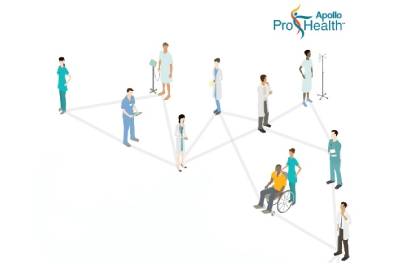Robotic Neurorehabilitation

Neurological disorders leave most with devastating disabilities such as the loss of movement in an arm or leg, and the accompanying loss of freedom of movement. Initially, these disabilities were considered incurable and therapy often focused on training people to use their “good side.”
Fortunately research shows that the concept of “task-specific learning”, in Neurorehabilitation based on neuroplasticity, suggests that activities of daily living may be trained and improved through continuous repetition in neurological patients. Robotic therapy meets this demand and enables intensive functional locomotion therapy with augmented feedback.
“Robotics is the intelligent connection of perception to action.” Michael Brady (~1985)
Robotics has come a long way in the past few years, and while we’re not yet creating bionic men and women, we can at least claim to make people “better, stronger, and faster.”
Robotics can compensate for the patient’s inadequate strength or motor control at speeds individually calibrated on the residual motor functions, while continuous feedback provides the patient with subjective perception of improvement. These characteristics make robotics a potential support in the rehabilitation domain for both trainers and patients, whose role remains central to the process. Robotic Neurorehabilitation is attractive because of its potential for easy deployment, its applicability across of a wide range of motor impairment, and its high measurement reliability.
At Apollo Hospitals we provide robotic Neurorehabilitation, a scientific innovation, helping our patients on their way to recovery and a better quality of life. Apollo Hospitals is the only institution in the country to have the latest technology and equipment in robotic neurorehabilitation:
- LOKOMAT for intensive locomotion therapy
- ARMEO for functional therapy of the upper extremities
- ERIGO for early rehabilitation and patient mobilization
LOKOMAT
While two-thirds of people who suffer from a neurological condition regain ambulatory function, the resulting gait pattern is typically asymmetrical, slow, and metabolically inefficient, mostly associated with difficulty in advancing and bearing weight through the more affected limb, leading to instability, along with increased risk of falls. Secondary impairments, including muscle disuse and reduced cardiorespiratory capacity, often contribute to further functional declines in gait. Hence, improved walking is one of the most frequently articulated goals of rehabilitation and interventions that effectively enhance locomotor function. They are essential in the rehabilitation of neurological patients following stroke, spinal cord injury, and traumatic brain injury, as well as in patients with multiple sclerosis, cerebral palsy or other neurological disorders.
Lokomat consists of a driven robotic gait orthosis that guides the patient’s legs on a treadmill offering a wide range of training possibilities and has a pre-programmed gait pattern facilitating a bilaterally symmetrical gait pattern as the individual actively attempts to advance each limb while walking on the treadmill. The pre-programmed walking pattern corresponds with normal gait kinematics including: gait cycle timing (i.e. stance vs. swing phase), inter-limb and inter-joint coordination, appropriate limb loading, and afferent signalling. Lokomat can be used in both adult and paediatric population likewise.
Lokomat entails the following benefits:
- Faster progress through longer and more intensive functional training sessions compared to manual treadmill training with adjustable level of difficulty and intensity according to the cognitive abilities and the specific needs of each patient
- Patient walking activity is easily supervised and assessed
- Gait pattern and guidance force are individually adjustable to the patient’s needs to optimize the functional training
- Improved patient motivation through visualized performance feedback offering various engaging virtual environments
- Assessment tools allow easy and reproducible measurements of the patient’s progress
- If needed – easily switch from automated to manual therapy
- An integrated biofeedback system monitors the patient’s gait and provides real-time visual performance feedback to motivate the patient for active participation.
ERIGO
Accelerates early rehabilitation and minimizes complications of debilitated/bedridden and neurologically impaired patients
Patients confined to prolonged bed rest endure reduced cardiac output, reduced oxygen uptake, muscle atrophy and skeletal demineralization, and the risk of injury when eventually elevated.
The Erigo combines a continuously adjustable tilt table with a robotic stepping mechanism, enabling early, intensive therapy.
- Combines three established therapies in one – verticalization, leg movement, and cyclic loading and unloading of lower extremities.
- Supports and facilitates patient mobilization
- Provides intensive afferent sensory stimulation
- Activates the cardiovascular system
- Repetitive physical motion reduces spasticity in some patients
- May reduce risk of secondary complications caused by immobility
- May improve alertness in vegetative state patients
ARMEO
The Armeo Therapy Concept improves the efficiency of therapy treatments because the exercises are self-initiated, self-directed, functional and intense. Even severely impaired patients can practice independently, without the constant presence of a therapist, allowing patients to explore their full potential for recovery.
The Armeo’s purpose is to support functional therapy for patients who have lost the function of or have restricted function in their upper extremities caused by cerebral, neurogenic, spinal, muscular or bone-related disorders.
The Augmented Feedback provided by the shared software platform:
- Encourages and motivates patients to achieve a higher number of repetitions, and this leads to better, faster results and improved long-term outcomes.
- Provides adjustable difficulty levels according to the patient’s needs and progress
- Provides adjustable workspace according to the patients’ changing abilities The “Continuum of Rehabilitation”, from immediate post-injury to long-term recovery, requires a range of therapies to address the changing needs of the recovering patient. Hence, at Apollo Hospitals, we offer various rehabilitation and physiotherapy services tailored to every individual patient and their condition.
UPDATED ON 28/03/2024
Apollo Highlights & Updates
 On World Health Day, Apollo Hospitals has unveiled the 4th edition of the Health of Nation report....
On World Health Day, Apollo Hospitals has unveiled the 4th edition of the Health of Nation report.... Call Us Now
+91 8069991061
Book Health Check-up
Call Us Now
+91 8069991061
Book Health Check-up





